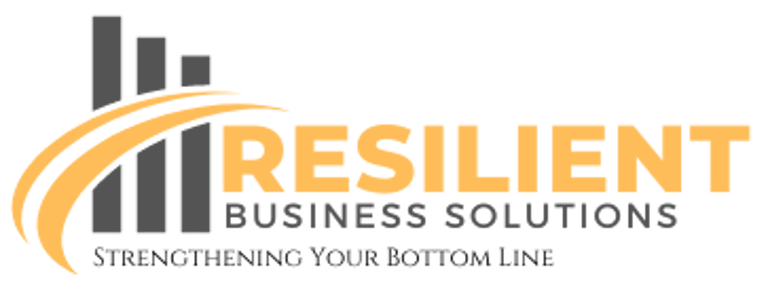How to Manage Cash Flow Like a Pro: Tips for Small Business Owners
Learn expert strategies for managing cash flow effectively, with practical tips on how bookkeeping and financial planning can help small business owners maintain financial stability.
4 min read


Understanding Cash Flow Fundamentals
Cash flow is the lifeblood of any small business, representing the movement of money in and out of your enterprise. At its core, cash flow can be divided into two main components: cash inflows and cash outflows. Cash inflows refer to the money received by the business from various sources such as sales revenue, loans, and investments. On the other hand, cash outflows are the expenses and payments made by the business, including salaries, rent, supplies, and loan repayments.
The financial health of a business is greatly influenced by its cash flow. A positive cash flow indicates that a business has more incoming cash than outgoings, allowing it to reinvest in operations, pay off debts, and possibly expand. Conversely, a negative cash flow suggests the business is spending more than it is earning, which can lead to financial distress.
Consider a small retail shop as an example. If this shop consistently has robust sales and collects payments promptly, it will experience a positive cash flow, enabling it to stock new merchandise, hire additional staff, or improve the store. Conversely, if the shop faces slow sales periods, delayed payments from customers, or unexpected expenses such as equipment repairs, it may experience negative cash flow, resulting in financial strain and limited operational capability.
Small businesses often encounter several cash flow challenges. Delayed payments from customers can significantly disrupt cash inflow, making it difficult to meet short-term liabilities. Additionally, high operational expenses, especially in the early stages of the business, can strain finances. Unforeseen financial demands, such as emergency repairs or unexpected tax obligations, further complicate cash flow management.
Poor cash flow management can have dire consequences. It can lead to difficulties in paying employees, suppliers, and creditors, potentially culminating in insolvency. Continuous negative cash flow, if not addressed, can ultimately result in business failure. Therefore, understanding and effectively managing cash flow is crucial for the sustainability and growth of any small business.
Implementing Effective Bookkeeping Practices
Effective bookkeeping plays a fundamental role in managing cash flow proficiently for small business owners. Accurate, up-to-date financial records are indispensable for tracking income and expenses, identifying financial trends, and making informed business decisions. The essence of effective bookkeeping lies in creating a system that not only captures all financial transactions but also categorizes them correctly and reconciles them with bank statements regularly.
To set up and maintain an efficient bookkeeping system, small business owners have two primary options: manual bookkeeping or using accounting software. Manual bookkeeping, although time-consuming, offers a hands-on approach to understanding financial flows. It involves maintaining ledgers, journals, and tracking all receipts and payments diligently. On the other hand, accounting software streamlines the process by automating data entry and report generation, thus saving time and reducing the risk of errors.
No matter the method chosen, regular reconciliation of bank statements is critical. This practice ensures that the records in your bookkeeping system match your bank account balances, identifying discrepancies that need resolution. Additionally, categorizing transactions correctly is equally important as it simplifies financial analysis and tax preparation, making it easier to track business performance over time.
Keeping receipts organized is another cornerstone of solid bookkeeping. Whether physically or digitally, maintaining a comprehensive record of receipts supports expense tracking and provides evidence during audits. Adopting practices like maintaining a dedicated folder or using receipt tracking apps can be immensely beneficial.
Working with a professional bookkeeper or accountant can significantly enhance the accuracy and compliance of your financial records. These professionals bring expertise in financial regulations and can provide crucial insights, ensuring that your bookkeeping practices adhere to legal requirements and industry standards. Additionally, their experience can help in identifying financial red flags early, allowing for timely corrective actions.
Strategic Financial Planning for Cash Flow Management
Effective cash flow management is vital to the sustainability and growth of any small business. Developing a comprehensive financial plan is the cornerstone of managing cash flow successfully. The first step in strategic financial planning is forecasting income and expenses. This forecast should be realistic, based on market trends and historical data. Predicting periods of high and low cash flow will help in setting achievable financial goals, essential for guiding the financial health of the business.
Creating a detailed cash flow statement enables business owners to track the inflow and outflow of money more accurately. This statement should include all sources of revenue and every potential expense. Coupled with a well-structured budget, it serves as a blueprint for maintaining profitability. Furthermore, employing a break-even analysis can offer critical insights into the minimum performance levels required to avoid losses and achieve financial stability.
Seasonal fluctuations in cash flow are a common challenge for small businesses. Preparing for these variations involves adjusting expenditure and revenue strategies accordingly. Building a cash reserve specifically for such fluctuations can provide a cushion during low-income periods, ensuring essential operations continue uninterrupted. Regularly reviewing and adjusting the financial plan based on actual performance and evolving market conditions is crucial for maintaining efficiency and relevance.
Debt management also plays a significant role in cash flow planning. Businesses should prioritize paying off high-interest debts and consider restructuring or consolidating loans to more favorable terms. Optimizing payment terms with suppliers and customers can further enhance cash flow. Negotiating longer payment terms with suppliers while encouraging faster payments from customers can create a beneficial cash flow cycle.
Additionally, maintaining a reserve fund for emergencies is an indispensable part of financial management. This reserve acts as a financial safety net, safeguarding the business against unexpected disruptions. By proactively engaging in strategic financial planning and employing these tools and techniques, small business owners can significantly improve their cash flow management, ensuring long-term success and stability.
When You Are Ready
Ready to simplify your business finances? At Resilient Business Solutions, we’re here to take the stress out of managing your books so you can focus on what you do best—growing your business. Whether you need help with bookkeeping, invoicing, or managing payables and receivables, we’ve got you covered. Contact us today to learn how we can support your business with reliable, expert financial services. Let’s build a resilient future together!
Strengthening Your Bottom Line
Customized financial support to empower your business success.
Get Our Free 50+ Page Small Business Success Guide Now
© 2024. All rights reserved.
